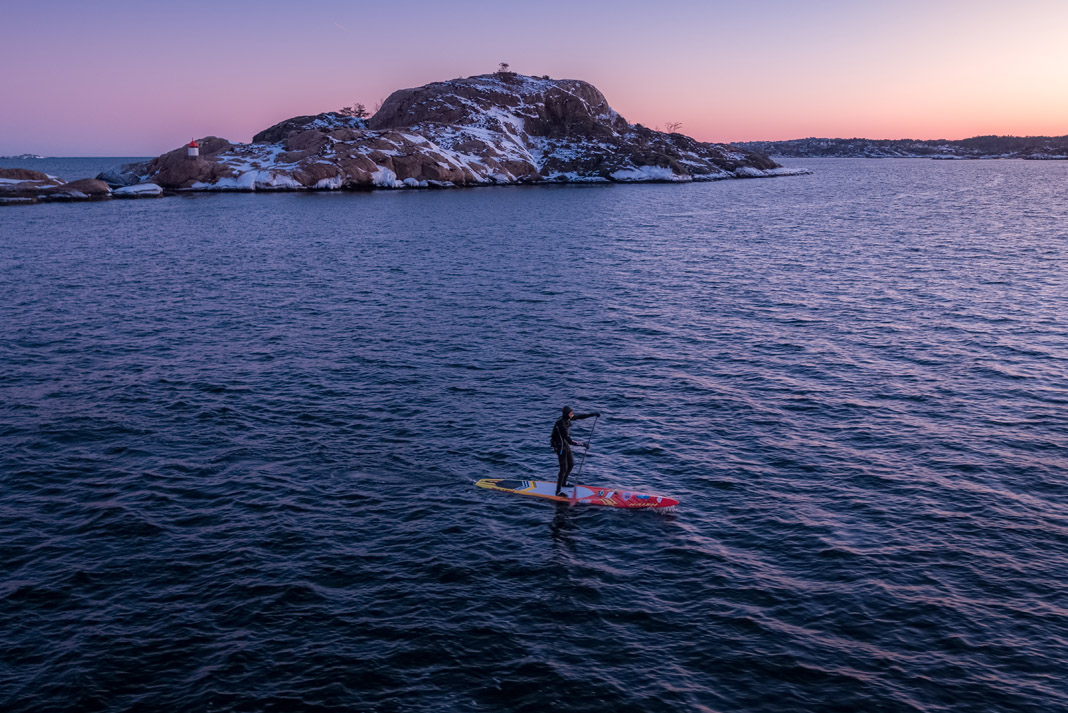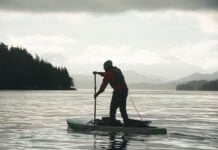Why did Casper Steinfath cross the Skagerrak Ocean? Growing up on the shores of Jutland, Denmark, paddleboard champion Casper Steinfath dreamed of following in the steps of the Vikings and crossing the 80-mile-wide Skagerrak strait to the coast of Norway.
On February 1, 2017, at the age of 24, Steinfath attempted his first Viking Crossing and failed.
“It was a disaster,” he says. “I was cocky and jumped into something I wasn’t prepared for.”
On his first attempt, Steinfath came up just 12 kilometers short. After 16 hours and 20 minutes, he could see the lighthouse on the Norwegian shore, but wind and waves denied him access. “I just wasn’t getting any closer,” he says.
Steinfath is no stranger to challenge. He’s a four-time International Surfing Association SUP world champion and 2017 Red Bull Heavy Water Champion. Unused to failing at something, this became Steinfath’s motivation to try the crossing again.
It was a personal dream, and a challenge,” he says. “What it became was a lesson about accepting failure. I walked in with one perspective and walked out with another. It was a learning process, and the fact I was defeated motivated me to learn from my mistakes.
Steinfath’s second attempt at the Viking Crossing became a personal quest to show humans are capable of anything, as long as we can accept our failure and grow from it.

After his first attempt, he changed his approach to training. Instead of going to Hawaii to train in similar but warmer conditions, he stayed in Denmark to acclimatize to the cold and the darkness. He woke up at 3 a.m. every day to paddle waves in the dark, so he wouldn’t get seasick like in his first attempt. Preparation consumed him.
Steinfath couldn’t do it alone. In training for the second attempt, his brother, Peter, was a constant support. He also had a dozen people advising on safety, navigation, nutrition and media.
“I realized I could achieve so much more asking for help,” says Steinfath. The most intimate task a friend helped with was lubing him up with Vaseline so his wetsuit wouldn’t give him a rash.
My world was turned upside down
At 2 a.m. on March 18, 2018, Steinfath launched his second attempt. He says he worried the entire 19 hours something would go wrong, and he would have to abort. His team followed on a fishing boat and helped him navigate in the dark. Knowing these people were standing by helped maintain his focus, he says.
Twelve kilometers from Norway, the conditions were similar to the first attempt, but this time Steinfath was better prepared. “Instead of fighting the ocean and the current, I came in sideways,” he says. After almost a full day at sea, he arrived on the shore of Norway, the first paddleboarder to cross the frigid Skagerrak strait.
Nine months later, Steinfath is still reflecting on the experience. “My world was turned upside down. It’s cliché, but I learned I’m capable of a lot more than I thought I was,” he says. The crossing has changed how Steinfath approaches competition as well. Where he was once scared of losing, now, “it’s not what defines me.”
Steinfath hopes expeditions like his challenge conceptions about personal and physical limits. “If I see one person question the limits about what he or she can do based on what I did, then that’s amazing,” he says.
Steinfath doesn’t know what’s next for him in the expedition world, but he’s hungry for the next challenge. And without a doubt, if he gets knocked down, he will surely get back up again.








